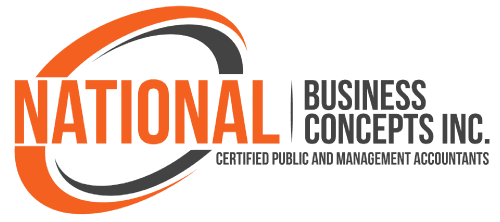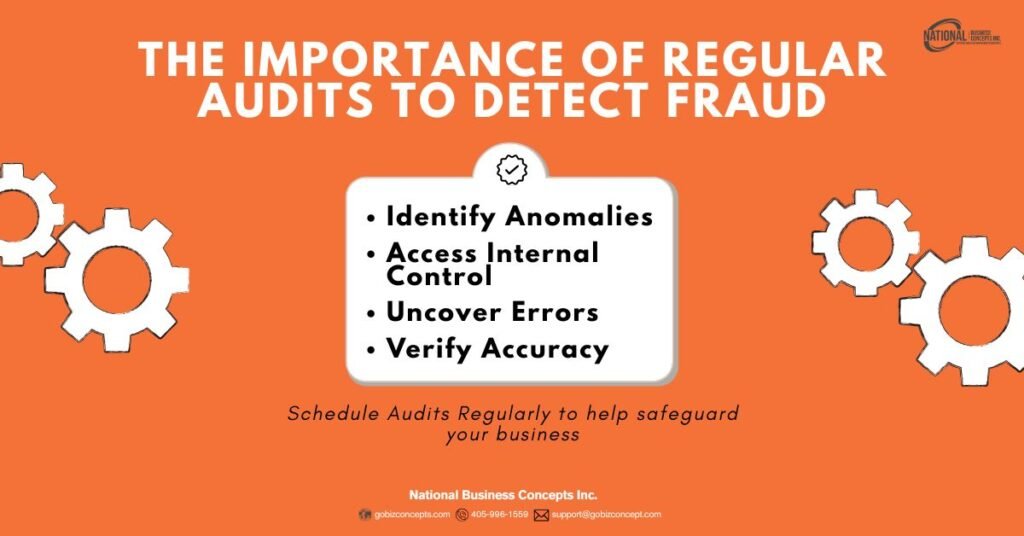Last time we considered the role of internal controls for fraud prevention. This time we focus on business audits, a major aspect of internal controls, for mitigating the incidence of fraud. Recall that we had identified in the article “Prevent fraud in your business with trustworthy internal controls” several fraud schemes including embezzlement (cash skimming) inventory theft, payroll fraud (ghost employees) expense reimbursement fraud, inflated revenue recognition, and understated liabilities. asset overstatement, kickbacks/vendor collusion, bid rigging, phishing & business email compromise, and data theft. We had also cursorily identified various measures to mitigate against these schemes, and again, inclusive of audits.
Regular audits help to set the tone at the top, act as a deterrent, and inform on developing fraud tactics and needed controls. However, we will consider how regular business audits can be used as a fraud-focused internal measure that assesses the effectiveness of controls, as fraud detection mechanisms, for fraud risk-based targeting, and as feedback loops for initiating improvements.
Audit of Internal Controls
Audits assess internal controls by reviewing how processes align with documented procedures and testing whether safeguards operate effectively under real-world conditions. Through audits transaction records are examined, interviews are conducted with staff, and walkthroughs are performed to trace workflows and verify that duties are properly segregated. Controls are stress-tested for reliability—such as whether authorizations are genuine, reconciliations are complete, and oversight mechanisms are actively enforced. When controls are missing, outdated, or ignored, the audit flags these as vulnerabilities.
For instance, a lack of dual signoff on payments or unrestricted system access can signal openings for embezzlement or manipulation. These gaps often reflect deeper organizational habits, such as misplaced trust or lax enforcement. The audit’s role is both diagnostic and corrective: it reveals blind spots and recommends measurable improvements to close fraud pathways before they’re exploited. Well-executed audits reinforce accountability and help build a culture of operational integrity.
Red Flags – Business Audits Directly Uncover Fraud &c
Business audits can show up anomalies through a blend of data analysis, procedural review, and behavioural observation. They begin by benchmarking expected patterns—transaction frequency, volume, timing—and then flag deviations like duplicate payments, round-dollar entries, or off-cycle transactions. Analytical tools help detect outliers, but anomalies often surface through inconsistencies in documentation, such as missing receipts, altered invoices, or vague memos that don’t align with standard protocols.
During audits, beyond the numbers, interpersonal dynamics are revealed. Resistance to oversight, secrecy around processes, or defensive behaviour during interviews can be subtle cues of deeper issues. When financial irregularities coincide with evasive or inconsistent narratives, the risk of fraud escalates.
Cross-referencing data across departments is important—discrepancies between HR and payroll or between procurement and vendor invoices often tell a bigger story. Ultimately, auditors combine precision with intuition to spot patterns that math alone can’t explain, weaving together evidence that exposes intentional misrepresentation.
Risk-Based Targeting
Risk-based fraud targeting is a strategic audit approach that focuses investigative resources on areas most vulnerable to misconduct. Instead of reviewing all transactions equally, auditors assess risk factors—such as transaction volume, access level, prior irregularities, or lack of oversight—and concentrate efforts where fraud is most likely to occur.
By applying risk models and historical data, auditors identify red zones like cash-intensive operations, vendor relationships, or departments with weak segregation of duties. This targeted scrutiny increases efficiency and precision, allowing deeper dives into high-exposure activities while minimizing wasted effort in low-risk areas.
The method helps expose procedural gaps and behavioural risks—such as unchecked authority or emotional blind spots in leadership. Ultimately, it transforms fraud detection from reactive to proactive, reinforcing internal control where the cost of fraud would be highest.
Regular Audits, An Improvement Feedback Mechanism
Audit findings illuminate vulnerabilities by identifying where systems, processes, or behaviours fall short of intended controls. Once these gaps are pinpointed—such as excessive access permissions or overlapping job roles—corrective actions can be targeted to reduce risk.
For instance, if a single employee manages both accounts payable and vendor onboarding (part of procurement,) the audit may recommend reassigning duties to prevent collusion or errors. If unauthorized access to sensitive data is detected, tightening user permissions or installing multi-factor authentication becomes a priority.
When policies are outdated or inconsistently applied, findings serve as a springboard for rewriting procedures to enhance clarity, compliance, and accountability. These adjustments patch technical flaws and also reshape cultural habits that enable fraud or neglect. By translating audit insights into actionable reforms, there is a shift from reactive problem-solving to proactive control-building.
The following is a possible list of audit procedures for various fraud scenarios whether it’s misappropriation, misstatement, or manipulation:
Fraud Scenario | Best Audit Procedure |
Embezzlement (Cash Skimming) | Surprise cash counts, review POS voids/refunds, reconcile cash receipts to deposits |
Inventory Theft | Physical inventory counts, cycle counting (regularly checking small, specific portions of inventory rather than doing a full count all at once), reconcile inventory records to GL |
Payroll Fraud (Ghost Employees) | Match payroll to HR records, confirm employee existence, review bank account overlaps |
Expense Reimbursement Fraud | Verify receipts, match expenses to policy, use data analytics to flag duplicates |
Inflated Revenue Recognition | Review contracts, test cut-off dates, confirm with customers, analyse revenue trends |
Understated Liabilities | Search for unrecorded liabilities, review post-period payments, confirm with vendors |
Asset Overstatement | Inspect physical assets, verify ownership, test depreciation and valuation methods |
Kickbacks / Vendor Collusion | Analyse vendor pricing trends, review procurement approvals, rotate vendor audits |
Bid Rigging | Review bidding process documentation, compare bids, check for patterns or favouritism |
Phishing & Business Email Compromise | Review IT security logs, test email protocols, confirm multi-factor authentication |
Data Theft | Audit access controls, review data transfer logs, test encryption and backup systems |
Conclusions
Regular audits are essential internal controls for detecting and preventing fraud. They review real-world adherence to documented procedures, assess safeguard reliability, and expose anomalies through data analysis and behavioural cues. Using risk-based targeting, auditors focus on high-risk areas—like cash flow or access permissions—to maximize detection. Interviews, walkthroughs, and transaction tracing help uncover patterns and verify duty segregation. Audit findings highlight control weaknesses and guide corrective actions, such as tightening access or updating policies, to strengthen organizational integrity.
By Richard Thomas


